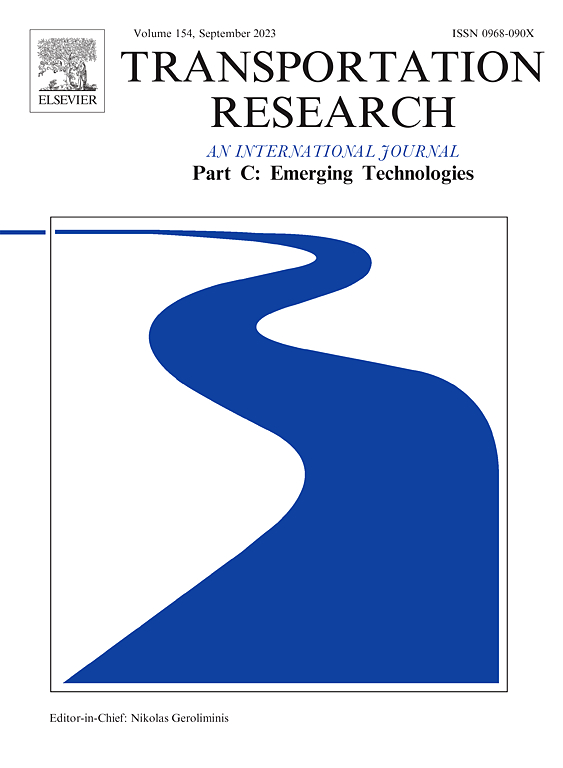Fair and efficient sharing: Dynamic pricing control for batch service system with strategic customers
IF 7.6
1区 工程技术
Q1 TRANSPORTATION SCIENCE & TECHNOLOGY
Transportation Research Part C-Emerging Technologies
Pub Date : 2025-02-01
DOI:10.1016/j.trc.2024.104994
引用次数: 0
Abstract
Motivated by the application of shared-type transportation, such as shuttle bus or ride-sharing, we propose a dynamic pricing control model by applying a strategic joining/balking scheme in which the fees for each customer and time of service commencement depend on their experienced waiting time cost in batch service (shuttle) systems. In this model, the monopolist sets the fee for each customer so that all customers on the same shuttle have equal experienced utility (including waiting costs), i.e., perfect experienced fairness among customers in the same batch is guaranteed. If the total waiting time cost for waiting customers exceeds a certain threshold, the monopolist allows the shuttle to depart, even if the number of customers is less than the full capacity (i.e., early departure), which can not only reduce the waiting cost but also achieve the experienced fairness among customers while guaranteeing the revenue and experienced utility. This study aims to verify the superiority of the dynamic pricing control model. We present a unique Nash equilibrium strategy, an algorithm for the transition probability, and effective approximations for the expected inter-arrival times of customers, conditional on the occurrence of early departure under the restriction that early departure can be executed only immediately before the arrival of the next customer. Then, we derive several performance measures to evaluate the dynamic pricing control model. Through numerical experiments, we confirm that our analytical results closely align with those of the general model, in which the timing of early departure is not restricted—implying the usefulness of our theoretical analysis. Moreover, we demonstrate that the dynamic pricing control model is superior to the conventional fixed pricing control model in terms of experienced fairness to customers and performance efficiency (for society, monopolist, and customers).
求助全文
约1分钟内获得全文
求助全文
来源期刊
CiteScore
15.80
自引率
12.00%
发文量
332
审稿时长
64 days
期刊介绍:
Transportation Research: Part C (TR_C) is dedicated to showcasing high-quality, scholarly research that delves into the development, applications, and implications of transportation systems and emerging technologies. Our focus lies not solely on individual technologies, but rather on their broader implications for the planning, design, operation, control, maintenance, and rehabilitation of transportation systems, services, and components. In essence, the intellectual core of the journal revolves around the transportation aspect rather than the technology itself. We actively encourage the integration of quantitative methods from diverse fields such as operations research, control systems, complex networks, computer science, and artificial intelligence. Join us in exploring the intersection of transportation systems and emerging technologies to drive innovation and progress in the field.

 求助内容:
求助内容: 应助结果提醒方式:
应助结果提醒方式:


